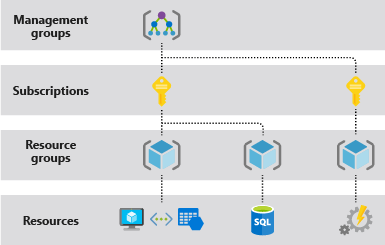A **resource group** in Azure is a logical container that holds related resources within an [[Azure Subscription]]. These resources can include virtual machines, storage accounts, web apps, databases, and virtual networks, among others. The main purpose of a resource group is to manage and organize resources that share the *same lifecycle*, making it easier to deploy, update, and delete them as a group
Here are some key points about resource groups:
- **Organization**: They help you organize resources based on their lifecycle and relationship.
- **Management**: You can manage access, policies, and compliance for resources within a resource group.
- **Monitoring**: Resource groups provide a way to monitor and diagnose issues across related resources.
- **Deployment**: You can deploy, update, and delete resources in a resource group together.

- **Characteristics:**
- **Location:** Each resource group has a region where metadata is stored.
- **Flexibility:** Resources can be in different regions and moved between groups.
- **Limitations:** Resource groups can’t be nested or renamed.
- **Design Considerations:**
- **Grouping Strategies:** By type, app, department, location, or billing.
- **Combination:** Use a mix of strategies for optimal organization.
- **Life Cycle:** Group resources to manage deployment, updates, and deletions together.
- **Administration:** Plan for the number of groups and access control.
- **Compliance:** Ensure metadata storage meets compliance requirements.
### Resources
[Manage resource groups - Azure portal - Azure Resource Manager | Microsoft Learn](https://learn.microsoft.com/en-us/azure/azure-resource-manager/management/manage-resource-groups-portal#what-is-a-resource-group)